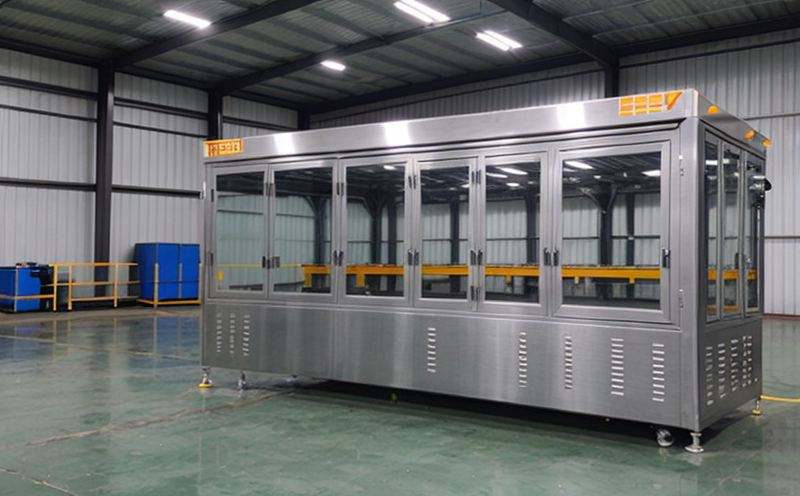ISO 16163-2 Adhesion Testing of Laminated Metal
The ISO 16163-2 standard provides a rigorous protocol for assessing the adhesion properties of laminates used in metal packaging. This test is critical for ensuring that multi-layered structures, such as those found in cans and bottles, maintain their integrity under various environmental conditions. Adhesion failure can lead to leaks or structural weakness, which are unacceptable in food, beverage, and pharmaceutical products.
The standard specifies a method to determine the peel adhesion strength of metal laminates used for packaging purposes. This test is particularly important for materials that combine different metals (e.g., aluminum and steel) with other layers like polymer films or coatings. The procedure involves applying a defined stress on the laminate sample, typically using a specific angle and speed, until it fails. The force at which failure occurs is measured as the peel adhesion strength.
The test setup includes specialized equipment designed to apply controlled stresses in a precise manner. Specimen preparation requires careful selection of the correct size and shape for testing according to ISO 16163-2 guidelines. Proper sample preparation ensures accurate results, which are crucial for meeting regulatory requirements.
Understanding the adhesion properties of these materials is vital for optimizing packaging design. By performing this test early in the development process, companies can identify potential issues and make necessary adjustments before production begins. This proactive approach helps reduce costly rework and ensures that final products meet stringent quality standards.
The results from ISO 16163-2 adhesion testing provide valuable insights into how well different layers within a laminate adhere to each other. These findings enable manufacturers to select the best materials and configurations for their packaging needs, ensuring superior performance in terms of protection, seal integrity, and overall product quality.
For instance, this test can help determine whether changes made during R&D are effective or if there are areas where improvements need to be made. It also plays a key role in ensuring compliance with international regulations governing food contact materials. Understanding these adhesion properties is essential for maintaining consumer safety and trust.
Test Procedure
The ISO 16163-2 test involves several steps to ensure accurate measurement of peel strength:
- Select the appropriate specimen size based on the intended application.
- Clean and prepare the sample according to specified methods.
- Attach one side of the sample to a fixture using an adhesive tape or another suitable method.
- Apply the peel force at a constant rate until failure occurs.
The force required to cause separation between layers is recorded as the peel adhesion strength. This value indicates the bond quality and can vary depending on factors like material composition, environmental conditions, and processing methods.
Benefits
- Ensures product integrity by detecting potential weaknesses early in the development process.
- Promotes compliance with international packaging standards and regulations.
- Aids in optimizing material selection for optimal performance.
- Reduces costs associated with rework or failure during production.
Eurolab Advantages
Our state-of-the-art laboratory offers comprehensive services tailored specifically to meet the needs of industries relying on metal packaging. With experienced technicians and cutting-edge equipment, we provide accurate and reliable adhesion testing according to ISO 16163-2 standards.
- Highly skilled personnel who understand both the technical aspects and practical implications of these tests.
- Access to advanced instrumentation capable of delivering precise measurements.
- Dedicated support throughout the entire testing process, from sample preparation to result interpretation.
Customer Impact and Satisfaction
Customers benefit greatly from our ISO 16163-2 adhesion testing services. By leveraging this expertise, they can:
- Raise the bar on product quality and safety.
- Avoid costly mistakes down the line by catching issues early.
- Ensure consistent performance across all batches of products.
- Gain competitive advantage through superior packaging solutions.





